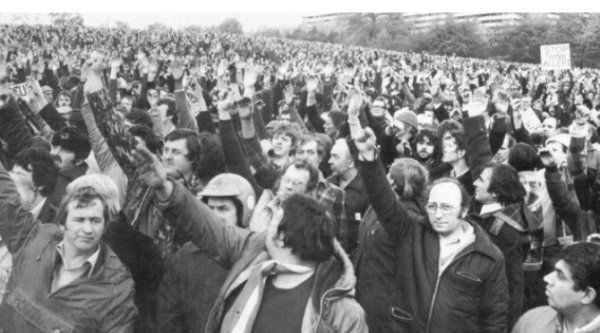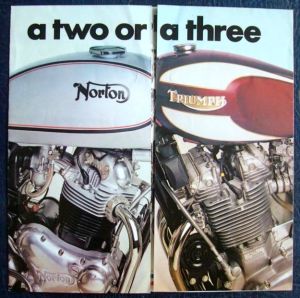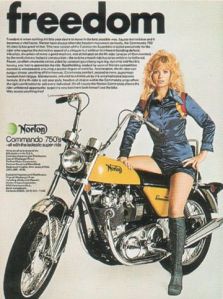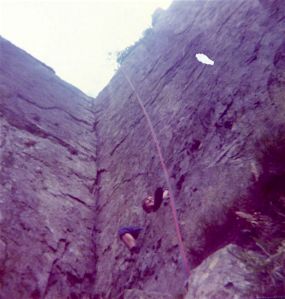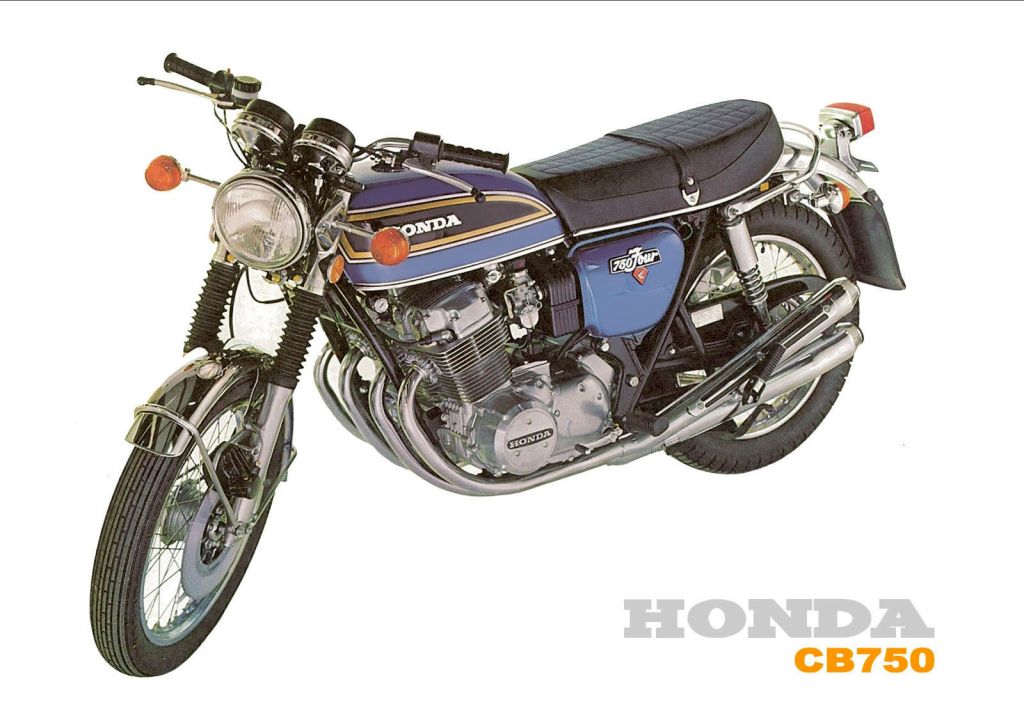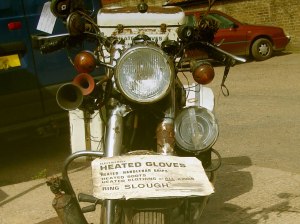Read an illustrated and lightly massaged excerpt from The Street Riding Years
View the 1978 Gallery

These days Triumph Motorcycles are doing all right, particularly with the parallel twins on which the company made its name. But in the 1970s success wasn’t a word you associated with Triumph or much else manufactured in a Britain blighted by industrial unrest.
The late seventies may have seen an evolutionary spike in motorcycle development, but the British bike industry had crippled itself with a complacent, post-war mentality and no longer ruled the roads.
“Meanwhile, the modern motorcycle era was taking shape, exemplified by Italian V-twins and Kawasaki’s sexy Z900s. Acquiring a full bike license at just 17, I could let rip on any of those; bikers could then have their cake and eat it – usually served by a nurse and with a limb in plaster. Only my £20 weekly wage kept me in check – well for another year at least.
What then, would be my first proper bike? The big Zeds apart, I mindlessly subscribed to the pejorative ‘UJM’ (Universal Japanese Motorcycle) tag: reliable, fast but bland. BMW produced expensive, well-engineered flat-twins ridden by smug, know-all beardies, not dashing young blades like me. Harleys were largely scoffed at in the UK while Italian bikes were gradually consolidating their glamorous image, outriding the best of the Japs so long as the electrics held out.
You might think the Brits only had nostalgia and heritage on their side, but there was another less tangible attraction that over-shadowed merely riding what your dad rode. In ’78 the surviving flagships from Triumph and Norton were still something to aspire to, virile survivors of the Jap invasion with something your yen couldn’t buy: lashings of ‘character’. Proper bikes of this era possessed the love-hate quality, paraphrased by TV comedian Dick Emery’s catchline: ‘Ooh you are a maddening bastard, but I love you’.
There was something about the understated charisma of Triumphs and Nortons that was unrelated to blind patriotism. I’d never really fancied a T160 Trident, but in black and gold, Norton’s 850 Interstate Commando (above) looked like a rumbling bundle of motorcycling bliss. Commando – what a great name for a British bike! What red-blooded young seventies male wouldn’t want to be associated with a plucky wartime saboteur, crouched in readiness with his Sten gun.
The same could be said of Triumph’s Bonneville, by this time only 20 years old and assembled in Meriden by a loyal and motivated workers’ co-operative where fitter and director all earned the same low wage. Sure, both these bikes were dinosaurs on their last gasps after the Japanese meteor impact changed the motorcycling climate for good. But they still managed to exude a rugged pre-PC manliness that left a seventies teenager starstruck.
In the spring of 1978 I ordered a UK-spec T140V in burgundy for £899. What I actually got was a blue, US-spec model with a few bits loose or missing, and “mate, you can take it or leave it”. Despite the efforts of TV consumer champion Esther Ranzten, American levels of customer service were still floundering some way offshore.
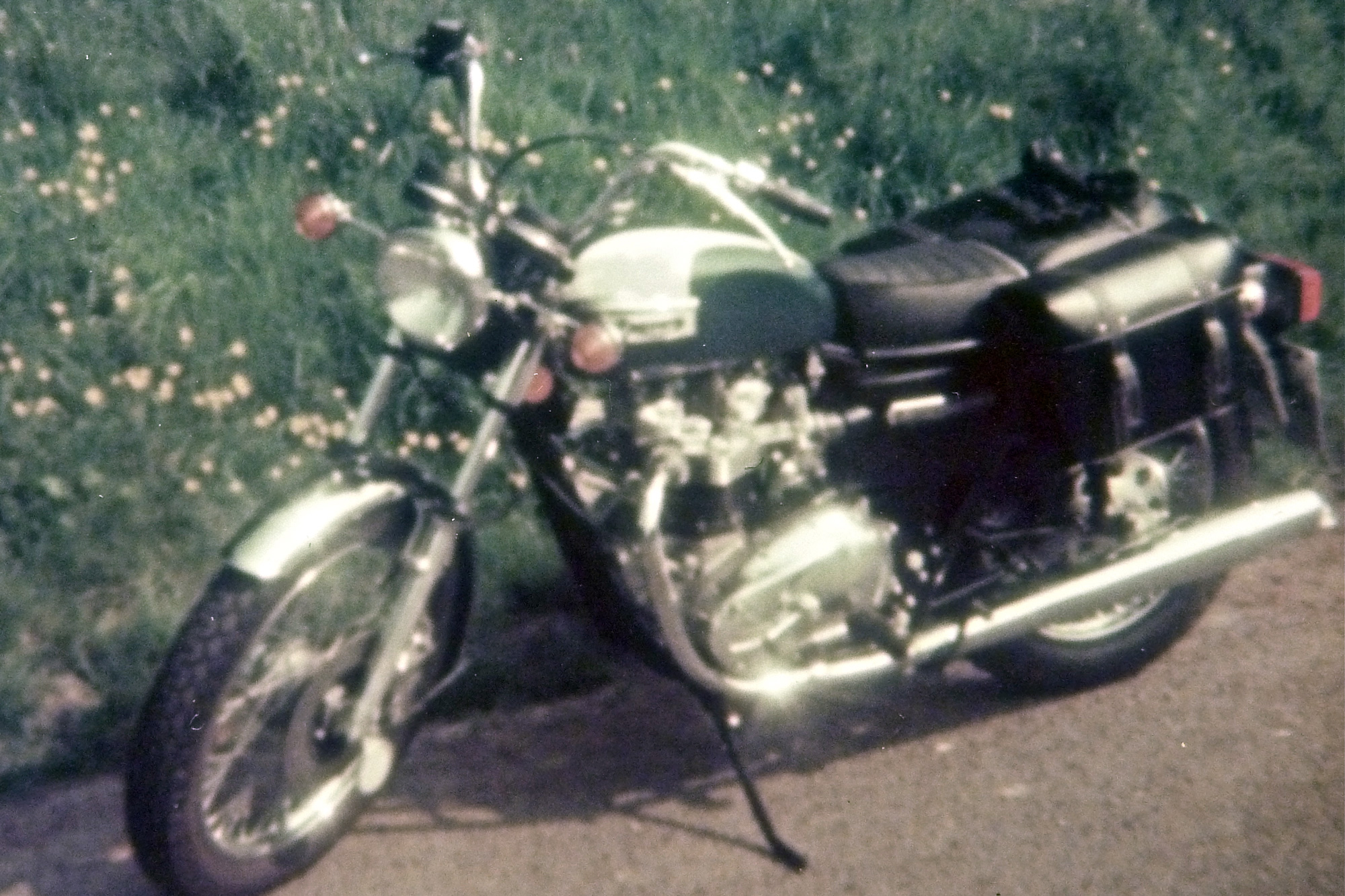
The US model came with a smaller teardrop tank and high bars – foretelling the naff ’mock chopper’ trend that was just around the corner. But high bar or low, the T140V displayed an attribute I’d not experienced on my execrable MZs: torque, or low-down pulling power. I don’t think I ever became immune to the Bonnie’s loin-stirring, smile-inducing shove persuasively unleashed between 2500 and 3000rpm before the vibration really set in. The Triumph had another sort of pulling power too. Girls quite possibly gave me a second look as I torqued along in my Fonze-like, high-bared pose.
After three-too-many MZs, riding the Triumph was like being carried out of the castle’s benighted dungeon into a field full of buttercups on the shoulders of the town’s fairest maidens. Suddenly I knew what biking was about – the surge of a powerful engine, the throb from the pipes and the actual stopping power of hydraulic disc brakes.
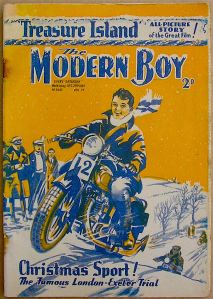
With my new-found status, I eagerly bought into the ‘Brit biker look’: open face lid with flat-glass Stadium goggles. A cream silk-like scarf just like Biggles or Douglas Bader, fluttered jauntily from the top of a nylon Belstaff Trialmaster jacket. My outfit was topped off by gigantic gauntlets resembling something you might attach to a cow’s udder.
Kick-starting the Bonneville demanded an exacting ritual. Turn on the fuel taps and ‘tickle’ or prime the carbs by pressing on tiny plungers. Once petrol was dripping onto the gearbox, you turned the ignition key then pressed the kickstart against the engine compression. Let it swing it back up and you were now ready to enact a triumphant lunge by coming down on the kick-starter with all you had.
It was a mechanism perfected over the eons so there was no risk of overdoing it, but any pussyfooting resulted in a knee-snapping backfire. This beast had to be grabbed by the mane and wrestled into life. I never failed to get a thrill from starting the Bonnie, and so long as you lunged down with gusto, it worked every time, hot or cold, rain or shine.
In 1978 one in three new 750s sold in the UK was a Triumph, but unfortunately, I’d bought mine during a three-month ban for riding on a motorway with L-plates stashed in my pockets. Like many others at that time, I carried on riding discreetly, cunningly taking the back streets to sixth-form college.
Once my A-levels were done I enjoyed a fabulous summer’s riding with a mate on a similar 750 Tiger (above), visiting the climbing crags in the Sussexc Weald, Peak District or Snowdonia’s famous Llanberis Pass, then down to the Gower and back via Avon Gorge for more of the same. Near Shrewsbury one time the battery exploded, but it was all part of the adventure – a carefree interlude between school and further education or work.
And once the exam results came in, work it was to be – no further education for me. At that time the back of Motorcycle News was packed with adverts for despatch riders – an exciting way to pass the time until I worked out what I really wanted to do. One phone call and I was in business at Capital Couriers in Kentish Town.

Why was Kentish Town in North London, miles from Kent which is south of London? As I was soon to learn, the capital was not an intuitive city to navigate. At that time my knowledge of London’s streets was based on the Monopoly board game – the expensive dark blues, greens and yellows were posh areas in the West End. The cheapies like Pentonville, and Whitechapel? Out east somewhere.
Armed with my Monopoly mind map and a good sense of direction, I collected my very first job to Chiswick in west London by the Thames. That’ll be easy: south to the river and simply follow it upstream, a foolproof strategy refined along the banks of the Nile by the likes of Burton and Speke.
That might have worked had the Thames run as straight as a Roman aqueduct, but rivers meander and roads followed the Thames only intermittently. Some two hours after what should have been a twenty-five-minute ride, I timidly delivered the package with no word of complaint. That came to be the abiding paradox of messengering: clients were paying twenty times the cost of overnight postage, but most of the time few gave a toss on prompt delivery.
At Capital I made friends with Nick on a CB750K6, descendant of the revolutionary 1969 superbike that had brought about the current megabike frenzy. Nick and I soon engaged in a ‘Brit Shit/Jap Crap’ banter that ran for days at a time, but always with a twinkle of affability. Of course, I was only partly joking. At that time I was besotted with my Bonneville, but that wasn’t the only thing. One morning I bounded up the stairs of a redbrick Edwardian block off Oxford Circus. A pretty receptionist was just tidying up some photocopies.
‘Ooh, are you the bike? Won’t be a minute,’ she said with a smile, glancing over her shoulder at the skinny bloke at the Xerox.
‘Are you new? I haven’t seen you before.’
Her optimal blend of nice hair, posh accent, and comely figure produced a pleasing, knee-weakening effect.
‘Yes, last week. I just started,’ I spluttered.
‘Ooh. What sort of motorbike do you ride?’
‘Triumph Bonneville. Seven-fifty.’
‘Oh,’ she replied, touching her lip with a light gasp and which I unhesitatingly interpreted as dazzled admiration.
I reached out for something to hold on to, but then Xerox bloke chucked some documents in front of her in a huff and broke the spell.
‘Ah, finally. Thank you, JEFFrey.’ With a shuffle, she slipped the documents into an envelope and handed it over with another smile.
‘There. Don’t ride too fast now. See you soon!’
Sadly, I was never to collect from John Princes Street again, but my faith in the Triumph’s magical charisma was enshrined. Another time while leafing through my A-Z an Australian tourist asked to take my picture.
‘My son back in Melbourne will love it. He’s always wanted a real motorbike.’
Another day in Victoria Street I came trotting back to the bike to see a pinstripey old chap stooped over the Bonnie’s Smith’s speedo.
‘Oh, do excuse me. I was just admiring your superb motor cycle. Does it really do a hundred-and-sixty-miles-per-hour?’
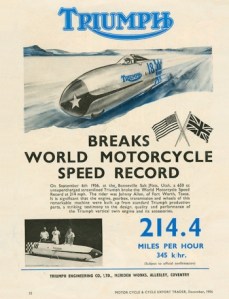
Non-biking civilians who didn’t know a pushrod from a pram responded to the Bonnie in a way no other bike of mine ever inspired. I put it down to a warm nostalgia for British engineering in its gentlemanly post-war apogee: sporty, but never aggressive or ostentatious. And the appeal was international. In the sixties, three out of four new Triumphs went to North America. After all, the Bonneville was named after the Utah salt flats where in the fifties American daredevils had set land-speed records on Triumph twins.
One evening at Colindale Blood Bank I had a chance to enact my own speed record. Handed a padded case with ‘Urgent – Human Tissue’ emblazoned across the top, the woman asked
‘How long will it take to get there?’
‘Er… Children’s Hospital, Great Ormond Street? About twenty-five minutes?’
‘Oh,’ she said with a frown. ‘Well, please be as quick as you can.’
Crikey, this was urgent. Was some child actually hemorrhaging on the slab, nine miles away? I thought for a few seconds, then kicked the Bonnie over and flicked the headlight on full. Tonight the Highway Code was being temporarily suspended.
With a squeal from the K181, I roared off down the Edgware Road for Staples Corner, hitting sixty-five along the North Circular before slicing through the traffic for the roundabout under the Brent Cross flyover. From here the Hendon Way was always a reliably fast run apart from the lights. I screeched in then pushed out past the cars. Cross-traffic swept from left and right, but once a space opened up I launched myself across the red light and belted on towards Finchley Road.
This stage was dicey, with heavy traffic and at least half a dozen lights before Swiss Cottage. So where necessary I skipped round the traffic islands, pulled up on the reds, watched for a gap, then gunned it. Around Regent’s Park I kept it down to 55mph: we all knew that in a ‘30’, 40-ish was the working limit. Stray beyond that for too long and things happened too fast or fines involved a ban.
The Bonnie’s side-stand scraped hard towards Hampstead Road, ETA just a couple of minutes now. Down the side of Euston Station – watch out for taxis! – then barge onto the busy Euston Road and heave over to the right for the turn into Woburn Place.
Once barrelling towards Russell Square I ran all the reds like something out of Ogri, then mounted the pavement for a pedestrian passage that led directly to Great Ormond Street. Tourists froze, startled by the revving Triumph’s full beam and my determined glare. With the tormented engine baking my shins, I sprinted down to the hospital, grabbed the blood, leapt the steps in a single stride and landed at reception like a hyper-caffeinated cat.
‘Hi. Got some blood from Colindale.’
I checked my watch. Fifteen minutes and as many reds. No bad.
That memorable cross-town blast was typical of the ‘you’ll-never-take-me-alive’ immunity we despatchers felt from the Law and the laws of physics, engendered on this occasion by a well-meaning if missplaced sense of entitlement. And it was why we were to become notorious and targeted as London’s dormant economy began to recover.
 An article appeared in Bike magazine about Security Despatch, one of the big players, based in trendy Covent Garden,. It depicted SD as an exclusive club of louche, articulate dropouts, and the antics and attitudes of this maverick band of bikers sounded a lot more glamorous than crumby Capital Couriers, opposite a pub with lunchtime strippers.
An article appeared in Bike magazine about Security Despatch, one of the big players, based in trendy Covent Garden,. It depicted SD as an exclusive club of louche, articulate dropouts, and the antics and attitudes of this maverick band of bikers sounded a lot more glamorous than crumby Capital Couriers, opposite a pub with lunchtime strippers.
Now with a bit of experience, I signed up at SD, my T140V slipping in well with the other unconventional machines. SD wasn’t for those bib-wearing saps at Mercury; it drew on a pool of free-styling, hard-charging dissenters committed to expressing their individuality and belief in personal freedom.
Shaun ran a Z900 with a raucous four-into-one; swaggering Tim rode an R80 with a Windjammer fairing, GDR escapee Klaus ran a bat-shit R90 proddy racer he campaigned on weekends and the late eccentric, Maurice Seddon, part-timed on a bonkers BSA older than me and which powered his hand-made electrically heated silk underwear.
At the Friday evening spin-down wages were paid, spliffs rolled and beers cracked open. The throng would offload their week’s burdens, query payments and then head for the pub, milling among the smartly dressed trendies we’d soon be calling yuppies.
Considering the use it was getting, my young Bonnie was doing a lot better than I had a right to expect and had never let me down, hard though that is to believe. I didn’t run it hard as the grin-factor was all about exploiting that low-rpm torque – high speeds were unpleasant.
My ride home to mum’s included a grippy left-hander at the bottom of Brixton Hill. Even after a long day in the saddle, I’d always do my best to line myself up to hit it ahead of the pack and shower them in a long trail of sparks. Banked over far less than I imagined, the Triumph remained planted like a chubby genie on his magic carpet. Shifting into fourth for the charge up to the lights by the prison, it was a great way to sign off the day.
I joined SD in early winter when the students and fair-weather dilettantes had scarpered like rats from a shipwreck. There was loads of work and soon I was regularly earning over £250 for a fifty-hour week. With all this money and learning the craft, it seemed a waste to throw it all away and do what, exactly? Unemployment was rising, and with Thatcher’s imminent ascendancy, it was about to go off the scale. So I decided to turn pro and knuckle down on a more conventional machine (what a mistake that was). The Bonneville was too good for all this rushing about, and the hefty kick-starting ritual was losing its shine when done forty-four times a day.

I sold the Triumph to another young pup enamoured by the cult of the Bonneville. Years later I saw it parked off Fleet Street and gave it an affectionate pat on the tank, like McQueen caught in the wire at the end of The Great Escape. Then, as now, I recall the reg’ without hesitation: WHX 791S. Can’t say that of the dozens bikes I’ve owned since. Rock on Triumph!


